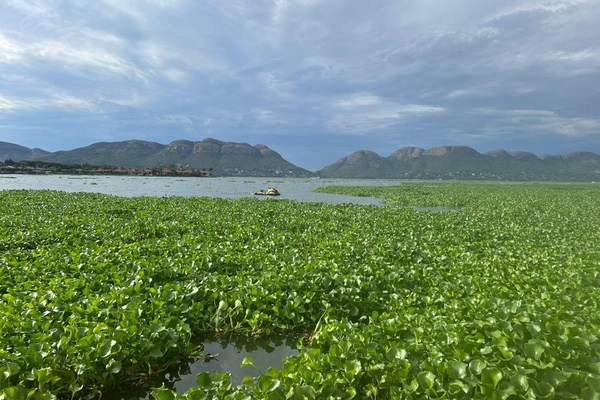
The Research problem
The current study comprehensively evaluates ecological impacts and potential benefits of the hyacinth colonies in proposed study areas in Africa, South East Asia, and the Americas. This includes inhibition and starvation measures (nutrient cycle disruption) and massive harvesting schemes for green energy production. The project seeks to obtain sustainable solutions that consider the complex dynamics of this invasive species in water bodies across the regions.
Research Design
An intensive literature review will be conducted to understand the origins of the problem, forcing factors, and laboratory experiments conducted to understand the biochemical and ecological factors influencing invasion. Finally, a hyacinth volarisation strategy will be designed, tested, and implemented for conversion of hyacinth carbon biomass to green energy using a water hyacinth volarisation unit (WHVU) developed at the University of Pretoria.
WP1 (Months 1-2): Literature reviews on water hyacinth, nutrient recycling understanding, potential of energy source and potential of water hyacinth. Literature will include consideration of efforts underway in the largest water body in Africa (Lake Victoria) by the Team at the University of Makerere.
WP2 (Months 2-5): Involves the development and installation of experimental units at laboratory level research, mostly at the University of Pretoria. Consideration and planning for a Water Hyacinth Volarisation Unit (WHVU) for digestion or co-digestion of harvested water hyacinth for either biodiesel or biogas production.
WP3 (Months 5-9): This phase consolidates findings from WP1 and WP2. In Month 9, a first draft report will be generated, discussing parameters adjustable for hyacinth control. Additionally, it will involve the development and implementation of a WHVU at Roodeplaat Dam.
WP4 (Months 9-12): Focuses on compiling data from the WHVU and drafting recommendations for a full-scale unit.
Capability of the Team: The project team comprises nine leading researchers from five WUN and two non-WUN member institutions, along with two early career researchers, three Postdoctoral Fellows and two PhD students. The five WUN partner institutions span Africa, North America, Europe, and South East Asia. These experienced team leaders have successfully coordinated multi-country, multi-disciplinary research projects, securing competitive research grants.
Project Objectives
This project aims at finding sustainable long-term solutions to eliminate water hyacinths in major water bodies in the tropics and subtropics. The proposed approach encompasses a combination of biochemical processes to inhibit hyacinth growth and mechanical harvesting methods to expedite the removal of biomass in the short-term with conversion of the harvested hyacinths for energy generation. In conjunction with the evaluation of nutrient cycling, the study will also assess the impact of hyacinths on parameters such as dissolved oxygen and turbidity within the ecosystem.